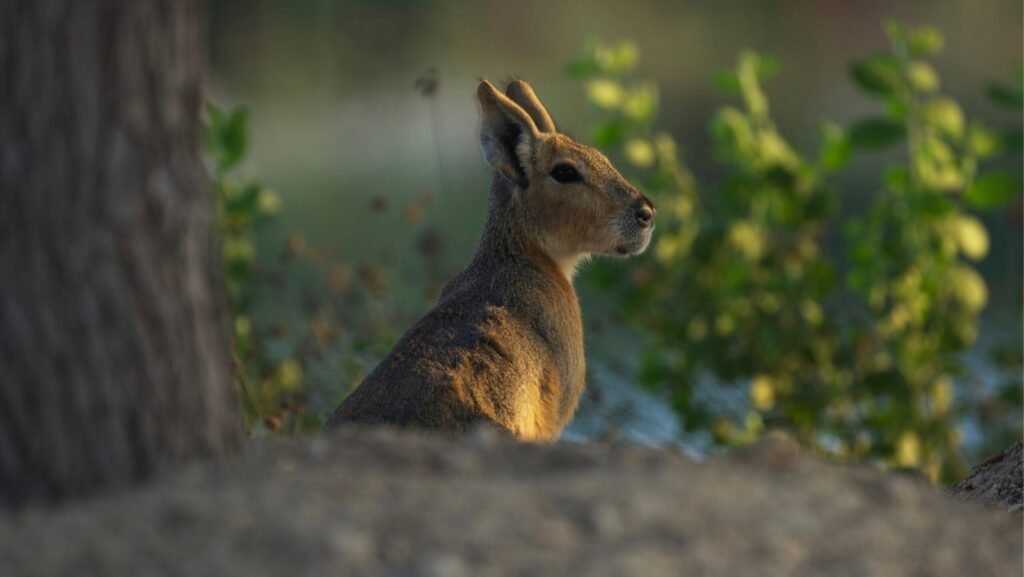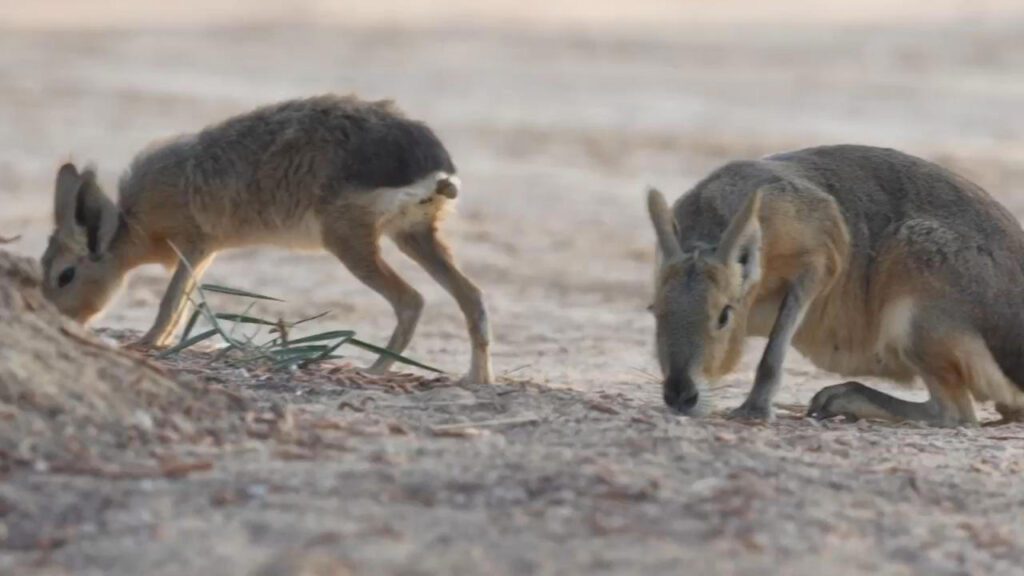In a surprising twist of nature, Al Qudra Lakes near Dubai has become home to a population of Patagonian maras — a species native to Argentina. These large, rabbit-like rodents have adapted to the desert landscape, capturing the fascination of visitors and wildlife enthusiasts alike.
What Are Patagonian Maras?
Patagonian maras, often mistaken for a hybrid between a kangaroo and a hare, are large rodents with long, slender legs and distinctive ears. Native to the arid plains of Argentina, these animals are known for their speed and agility, often reaching speeds up to 30 mph when fleeing predators.
These fascinating creatures have a unique appearance, resembling a blend of several animals. Their compact bodies, elongated limbs, and sharp, inquisitive eyes give them an almost mythical presence. Maras are herbivores, primarily feeding on grasses and shrubs, but they can adapt their diets to whatever vegetation is available. In the desert environment of Al Qudra Lakes, they have been spotted nibbling on native plants, proving their resilience in unfamiliar surroundings.

How Did They End Up in Dubai?

While the exact origins of the Patagonian maras in Al Qudra remain a mystery, experts speculate that they may have escaped from private collections or exotic pet farms. The UAE is known for its fascination with exotic animals, and it’s possible that a small number of maras found their way to the lakes, where they thrived in the relatively temperate surroundings.
Animal smuggling and illegal trade are unfortunate realities in many parts of the world. However, some believe these maras may have been part of a legal exotic pet trade and accidentally released. Regardless of how they arrived, they have adapted well to the artificial oasis of Al Qudra Lakes, which provides water, vegetation, and ample space to roam.

Local authorities have not yet confirmed whether the maras pose any ecological threats. However, their presence has not shown any significant impact on the region’s native wildlife. Instead, they have become a unique addition to the biodiversity of Al Qudra.
Life in the Desert
Despite the harsh desert conditions, Al Qudra Lakes provides a more hospitable environment with its man-made water bodies, vegetation, and shaded areas. This has allowed the maras to adapt quickly. Visitors often spot them near the water, grazing on patches of grass and shrubs.
Patagonian maras are also known for their strong social bonds. They often move in pairs or small groups, maintaining close relationships with their mates. Unlike solitary animals, maras exhibit cooperative behavior, with both parents taking turns caring for their young, called pups. Their loyalty and companionship add to their charm and make them even more captivating to observe.
Wildlife enthusiasts visiting the lakes have reported that the maras exhibit their characteristic behavior of moving in small groups, maintaining strong social bonds. Their presence has even become a popular attraction for photographers and nature lovers.
Public Fascination and Ethical Responsibility
As images and videos of the maras circulate on social media, more people are flocking to Al Qudra Lakes for a chance to see them. However, authorities are urging the public to respect the animals’ space and avoid feeding or disturbing them.
“While it’s wonderful to see people taking an interest in wildlife, it’s crucial to remember that these animals are still adapting to their surroundings,” said a spokesperson from the Dubai Municipality. “Disturbing them can lead to stress and unpredictable behavior.”
Visitors are encouraged to observe the maras from a distance using binoculars or cameras. Feeding the animals is strictly discouraged, as it can lead to dependency and malnutrition. Authorities also recommend keeping pets on a leash to prevent unnecessary confrontations with the maras, who may perceive dogs or other animals as a threat.
Conservation Efforts and Monitoring
The Dubai Municipality has initiated monitoring efforts to assess the impact of the maras on the local ecosystem. Wildlife experts are studying their feeding habits, reproductive patterns, and overall health to ensure the lakes remain a balanced habitat.
If necessary, intervention strategies, including relocation to sanctuaries, may be considered to maintain ecological harmony. However, for now, the maras appear to be peacefully coexisting with the other native species of the region.
Research on non-native species like the Patagonian maras provides valuable insights into how animals adapt to new environments. This information could be used to inform conservation efforts in other regions facing similar ecological challenges.
A Unique Experience for Visitors
For those planning to visit Al Qudra Lakes, the best times to spot the maras are during early mornings or late afternoons when they are most active. Binoculars and cameras are recommended for those hoping to capture a glimpse of these elusive animals.
Al Qudra Lakes, already a popular destination for camping, cycling, and birdwatching, now offers an additional reason for nature enthusiasts to explore its beauty. With patience and a bit of luck, visitors may witness these Argentine marvels adapting to life in the Arabian Desert — a true testament to nature’s resilience and wonder.
So, the next time you’re out exploring the UAE’s stunning landscapes, keep an eye out for the maras of Al Qudra Lakes. You never know what fascinating wildlife encounter might await you in the heart of the desert.
Also read: UAE and Saudi Arabia Partner on Major Infrastructure Projects














